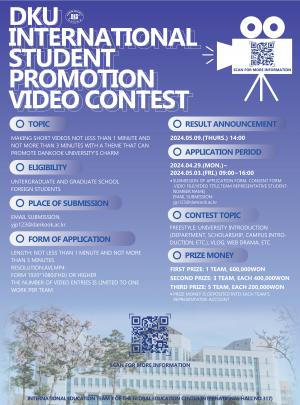‘Even though many things change without a trace as time passes, the Deoksugung Stonewall Walkway remains.’ This is a song written by Lee Moon-sae called ‘Gwanghwamun Yeonga’. The Deoksugung Stonewall Walkway is a meaningful place with a lot of history and meaning as we have heard about in many traditional songs. We went on a tour of the site, to learn more about its significance.
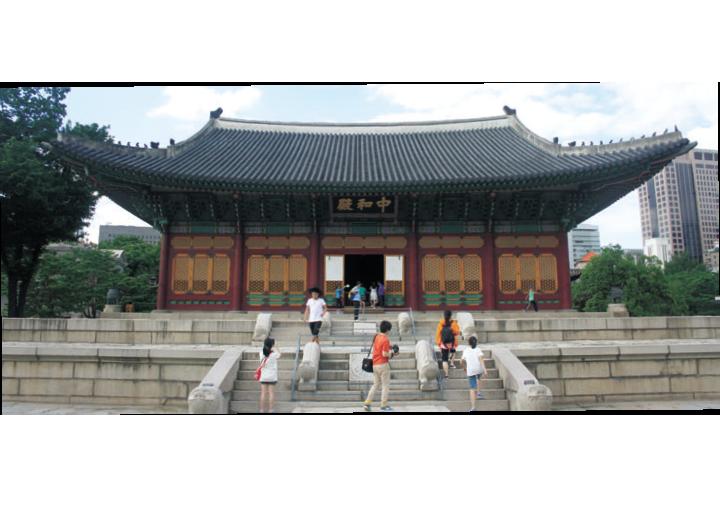 |
| ▲ Junghwajeon Hall in Deoksugung Palace |
The Deoksugung Stonewall Walkway, situated in Jeongdong-gill, is at a four- way-stop intersection, and highlights its deep-rooted history. The Dankook Herald (DKH) visited these heritage sites in historical order for our report. However before discussing our visit to these precious locations, it is important that you learn the history of the Korean Empire to better appreciate Jeongdong properly. The Korean Empire period existed during the Joseon Dynasty from October 12, 1897 to August 29, 1910. King Gojong, returned to Deoksugung Palace and announced the Korean Empire period as an emperor’s period in 1897. Even though Korea looked like an independent country during the Enpire Period, it actually was not. Eul Sa Neuk Yak (the Protectorate Treaty between Korea and Japan) concluded in 1905 and Japan's colonization of Korea (through the Japan-Korea Treaty of 1910) was forcibly decided and proclaimed into law on August 29, 1910. So the Korean Empire no longer existed and disappeared from history. The Deoksugung Stonewall Walkway has a rich history linked to the Korean Empire.
Deoksugung is the center of the Deoksugung Stonewall Walkway. Unfortunately, it was in ruins and we found it hard to find traces of its existence. Rather only the foreign embassies around it stood out. Deoksugung, called Kyungungung, is the site of a Russian legation after Emperor Gojong moved the former Russian Legation to Kyungungung. The walkway was damaged by the filming of many dramas such as Prague’s lover. Repairs were have to begun a year ago, but they hadn't started yet, so we were not able to see a connected Deoksugung Stonewall Walkway. isappointed, we headed out to our next heritage destination.
 |
| ▲ Pai Chai Hakdang, the first modernized education institute |
The second site we visited was ‘Pai Chai Hakdang’, the first modernized educational institute. It was used as classroom in old times, so it has a lot of modern educational meaning. It was established by the American missionary, Henry Gerhart Appenzeller, as the first western style school and it became a modern secondary institution. It has retained its old structure and feeling but it was worn out on the inside. Actually, it is famous for its intact and outstanding building form, and as a result it is a very important indicator of modern architecture in Korea. The structure was remodeled and newly opened as the ‘Pai Chai History Museum’. There was a permanent exhibition hall, a planning exhibition hall, an experience classroom, and a seminar room. The permanent exhibition hall contained a reproduction of an early 1930’s classroom.
 |
| ▲ Seoul Museum of Art |
The third site we visited was the Seoul Museum of Art. It was founded in 1988 and in 2002, it moved behind Deoksugung Palace in the spot of the old Supreme Court. It has distinct historical value because the Supreme Court was a well preserved Renaissance building. The first basement level was wagon-headed and the third floor has a very unique modern Gothic lancet arch. The Supreme Court is well preserved and the triple arched front entrance properly reflects the symbolism of the Court. Therefore, it is famous for its architectural and historical value. There are lots of quality works of art on display that are equally profound. Museum-goers will be mesmerized by the exhibitions. ‘Driving coin into wood’ was a pleasureable and novel exhibition for visitors to the first floor.
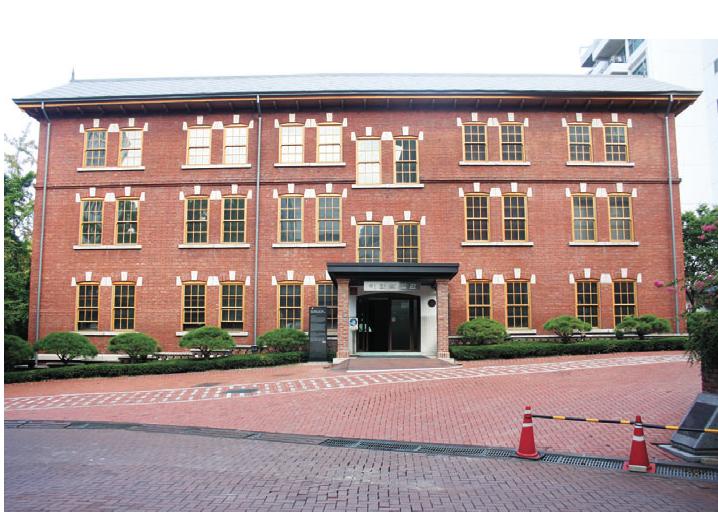 |
| ▲ Ewha Museum located in entrance of Simpson Memorial halla |
Next, DKH visited Simpson Memorial Hall situated inside Ewha Women’s University campus. Simpson Memorial Hall is a building that was built with funds entrusted by American Sarah J. Simpson in 1915. Currently, the Simpson Memorial Hall houses the Ewha Museum, a subject classroom, and a self-study room for various educational activities. Unfortunately, we were unable to explore the inside of the building because students were studying on the day of our coverage. According to our Internet based research, the hall contains a display of the historical changes to the Ewha uniform, a harmonium that was used in the modern age, and a school bell that was used in the 1950s. If you are planning to visit this place, we recommend you see the exhibits by getting their on time. Also, you can see from the facade that the edges of the windows of the three-story gothic brickbat building are made of white granite. The Simpson Memorial Hall, which looks like it is built on a slanted hill, has many beautiful meanings internally, externally and historically as one of Jeongdong’s typical cultural assets.
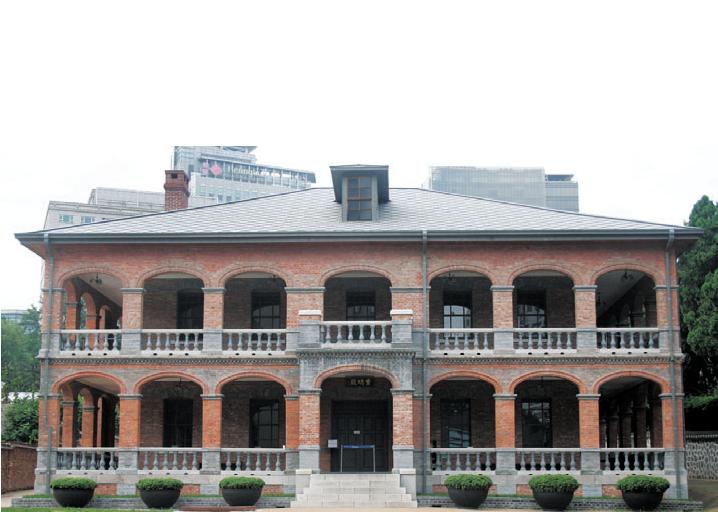 |
| ▲ Jungmyeongjeon |
The next site we toured was Deoksugung Palace’s Jungmyeongjeon. Jungmyeongjeon is the first western building to be built on Korea’s royal court when Deoksugung was called Kyeongungung. Jungmyeongjeon was an imperial family’s library built in 1901 and was first called ‘Suokheon’. Unfortunately, it was also the star-crossed location where the Japan-Korea Treaty of 1905 was agreed upon. In addition, it has historical significance in that it was the site of many ordeals, such as the dispatch of the The Hague envoy. If you decide to visit the site, make sure you arrange for a guided tour. Guided visits are free of charge and are offered twice a day on weekdays and 3 times a day on weekends.
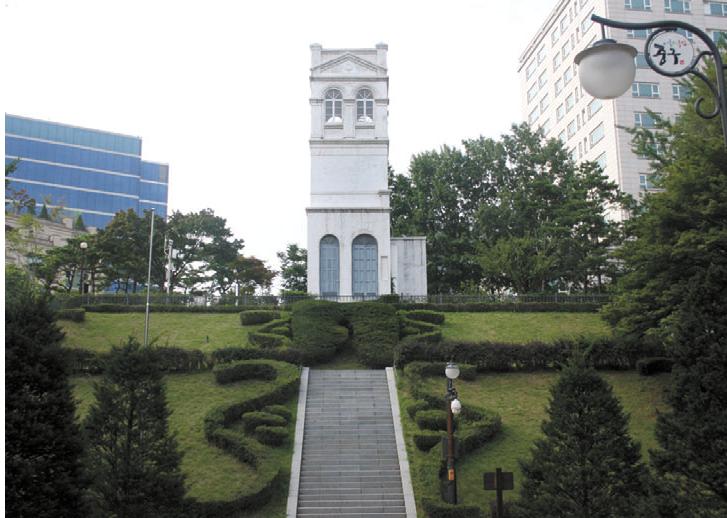 |
| ▲ Former Russian Legation |
The last site we visited was the famous former Russian Legation. The site is famous for acting as a refuge for Korea royals. Gojong and the crown prince left the Josean Dynasty kingdom and dwelled at the Russian Legation for about a year because of the Japanese army’s merciless assaults after the The Eulmi Incident, where Empress Myeongseong was killed. DKH visited the very place where Gojong took refuge. The Russian Legation was located in the most secluded part of Jeongdong. An exotic white building comes into sight on your right, once you start going up a steep road next to the school Yewon of Jeongdong. This structure was not the main building of the Legation. DKH saw only a part of the tower, as this and a clearing, was all that was left after the it was destroyed during the Korean War. For this reason, it is more reasonable to call it a monument rather than a building. Entrance to the site was banned as well. However, it was obvious just by looking at the building’s exterior that it was designed by a foreigner and not a Korean. This is because there were no traditional patterns or roof tiles and had more of an impression of a simple foreign castle than the buildings we already mentioned.
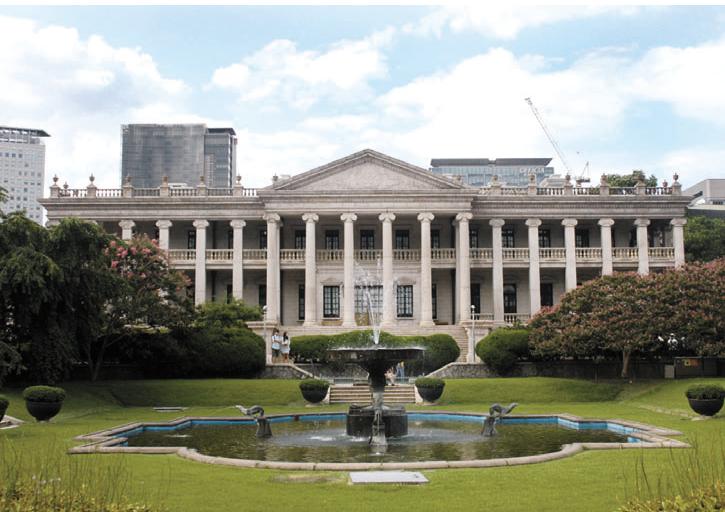 |
| ▲ Seokjojeon Hall |
Above this, Seokjojeon Hall and Chungdong Church graced the Deoksugung Stonewall Walkway. These structures did not share the same wonderful history but nonetheless provided a beautiful site for taking pictures, and we quickly took some. Seokjojeon Hall, built in the 19th century had a European style to it. The facade of its columns were designed using ionic architecture and the interior of the building contained 18th century rococo architecture. As a result, there was a breathtaking view from every angle. Although the places we mentioned are places worthy of a visit, there are plenty more sites not mentioned in this article that are also wonderful. So, we suggest you travel there and enjoy Jeongdong's scene. These sites are free of charge, so it won’t put you out of pocket. In addition, even though traveling in historial order was nice, traveling to the center of the Jeongdong intersection divided by Daehanmun, Seosomun, Youngsungmun, and Donuimun is also good. Take the time to visit these sites, and see the Deoksugung Stonewall Walkway. It will help you learn about our history and make your visit more meaningful.
Kang Hyun-hee,Cho Ah-young,Par anhj12261226@gmail.com

![[Campus Magnifier] Let's Surf the Library!](/news/photo/202404/12496_1765_4143.jpg) [Campus Magnifier] Let's Surf the Library!
[Campus Magnifier] Let's Surf the Library!
![[Campus Magnifier] Let's Surf the Library!](/news/thumbnail/202404/12496_1765_4143_v150.jpg)
